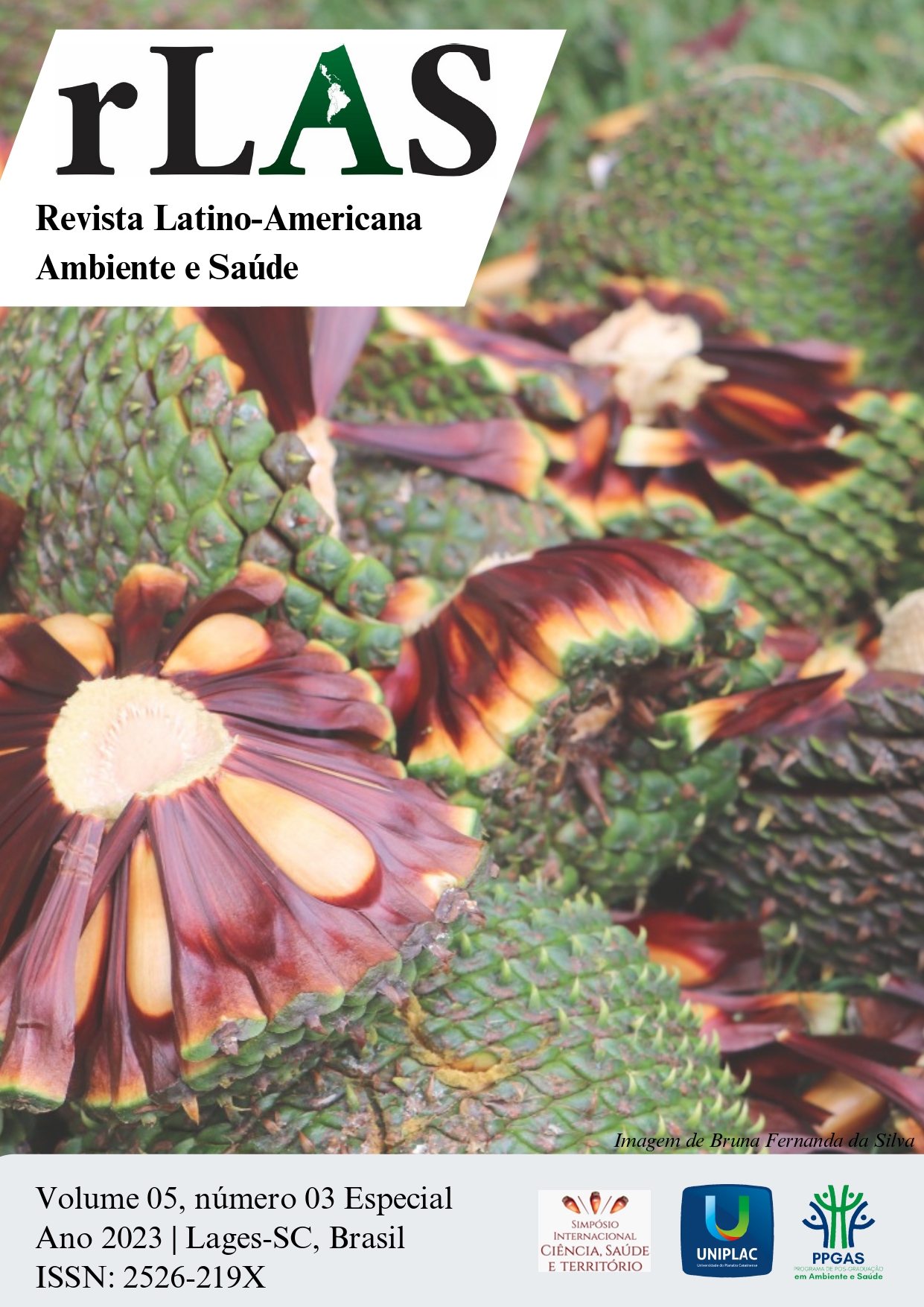Declínio de Jacaranda puberula (carobinha) em uma floresta ombrófila mista em Lages-SC
Keywords:
Dinâmica florestal, Fragmento florestal, CarobaAbstract
The objective of this study was to investigate the dynamics of Jacaranda puberula Cham. (carobinha) over a 13-year period in an Araucaria Forest fragment in Lages, SC, Brazil. This species was inventoried in permanent, systematically stratified plots in 2008, 2012, 2016, and 2021. Recruitment, mortality, basal area gain and loss rates, and net change in number of individuals and basal area were calculated over three inventory periods (2008-2012, 2012-2016, and 2016-2021). Frequency histograms of individuals in diameter classes were also obtained for each inventory year. Both the number of individuals and basal area decreased over the years of observation, resulting in negative net changes in all study periods. This population decline in the studied fragment may be due to J. puberula being an initial species of succession. The results of the histograms confirm this pattern, as the decline occurred primarily in individuals in the smallest diameter classes, i.e., the younger ones, suggesting that the population is not being replaced by new individuals.
References
GLUFKE, C. Espécies florestais recomendadas para recuperação de áreas degradadas. Porto Alegre: Fundação Zoobotânica do Rio Grande do Sul, 1999. 48 p.
GUEDES, J. S.; KRUPEK R. A. Características ecológicas e fitossanidade de espécies arbóreas em um fragmento de Floresta Ombrófila Densa da região sudeste do estado de São Paulo. Ambiência, v. 13, p. 311-324, 2017.
HIGUCHI, P. et al. Influência de variáveis ambientais sobre o padrão estrutural e florístico do componente arbóreo em um fragmento de Floresta Ombrófila Mista Montana, em Lages, SC. Ciência Florestal, v. 22, p. 79-90, 2012.
HIGUCHI, P. forest.din: Função em linguagem de programação estatística R para a determinação de taxas demográficas de espécies arbóreas. 2017. DOI: 10.5281/zenodo.439701. Disponível em: <https://github.com/higuchip/forest.din>. Acesso em: 3/4/2023.
IBGE. Manual técnico da vegetação brasileira. Manuais Técnicos em Geociências, n. 1. Rio de Janeiro: Fundação Instituto Brasileiro de Geografia e Estatística. 2012. 271 p.
KORNING, J.; BALSLEV, H. Growth and mortality of trees in Amazonian tropical rain forest in Ecuador. Journal of Vegetation Science, v. 4, p. 77-86, 1994.
MOSTAFA, N. M.; ELDAHSHAN, O. A.; SINGAB, A. N. B. O gênero Jacaranda (Bignoniaceae): uma revisão atualizada. Pharmacognosy Communications, v. 4, p. 31-39, 2014.
PRIMACK, R. B. et al. Growth rates and population structure of Moraceae trees in Sarawak, East Malaysia. Ecology, v. 66, p. 577-588, 1985.
R DEVELOPMENT CORE TEAM. R: A language and environment for statistical computing. R Foundation for Statistical Computing. Disponível em: <http://www.R-project.org>. Acesso em: 3/4/2023.
SALAMI, B. et al. Influência de variáveis ambientais na dinâmica do componente arbóreo em um fragmento de Floresta Ombrófila Mista em Lages, SC. Scientia Forestalis, v. 42, p. 197-207, 2014.
SANTOS, P. M. L. et al. Atividade antioxidante dos extratos das folhas de Jacaranda puberula Cham., Bignoniaceae, planta medicinal brasileira utilizada para depuração do sangue. Revista Brasileira de Farmacognosia, v. 20, p.147-153, 2010.
SANTOS, G. N., et al. Dinâmica do componente arbóreo e regenerante em uma floresta nebular no Planalto Sul Catarinense. Ciência Florestal, v. 31, p. 1086-1104, n. 3, 2021.
SCHAAF, L. B. et al. Alteração na estrutura diamétrica de uma Floresta Ombrófila Mista no período entre 1979 e 2000. Revista Árvore, v. 30, p. 283 - 295, 2006.
SHEIL, D.; MAY, R. M. Mortality and recruitment rate evaluations in heterogeneous tropical forests. Journal of Ecology, v. 84, p. 91-100, 1996.


